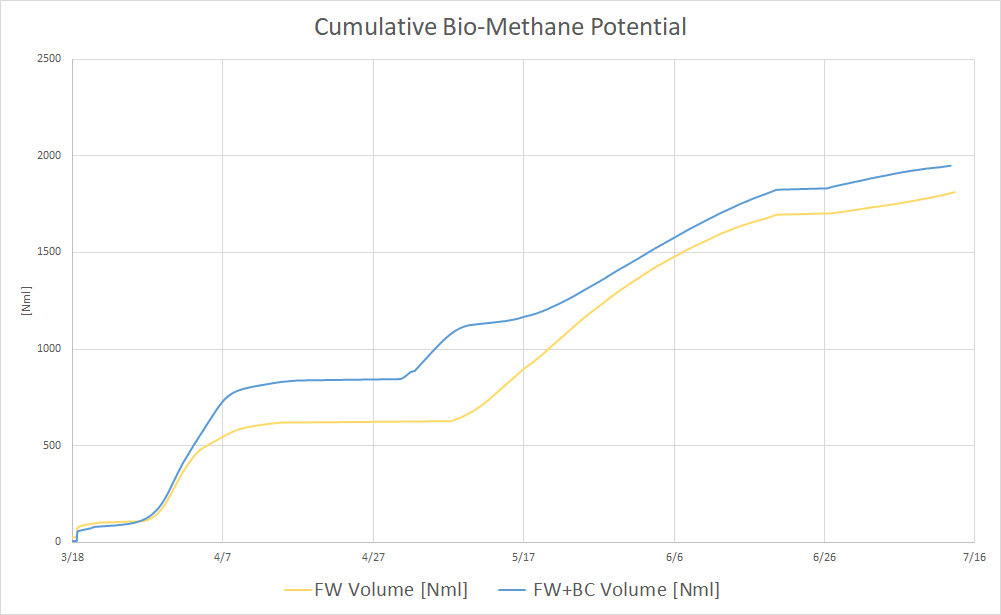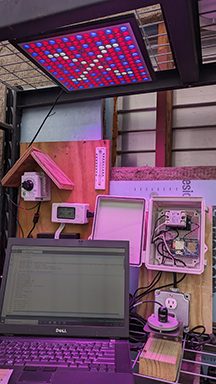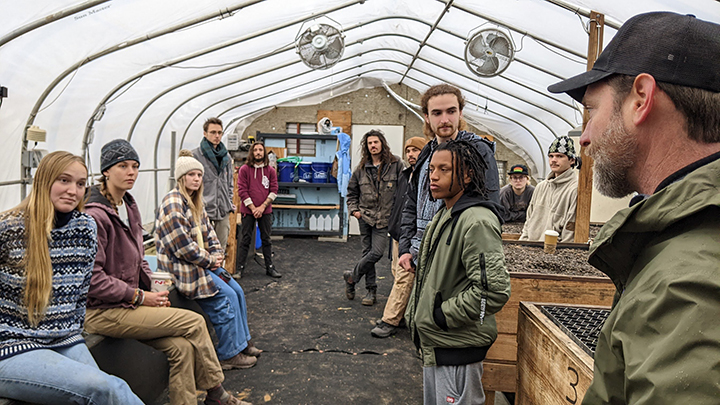Nexus Research Explores Readily Available Resources That Enhance Results
Biochar- Anaerobic Digestion of Food Waste
Food waste contains a variety of substrates, making it difficult to maintain optimal process conditions during anaerobic digestion (AD)1. Biochar's high surface area and porosity provide a diverse environment suited to the habitat conditions of various microorganisms, aiding their colonization and buffering capacity in the process2. To investigate the impact of biochar on the AD process, we performed Biochar-AD (BCAD) experiments with and without biochar using the AMPTS II biomethane potential (BMP) analyzer. We extracted the inoculum from Nexus's Homebiogas® system and mixed it with food waste. Biochar was produced in a top-lit gasifier at 1400-1800°F. We intended to have a low inoculum-to-substrate ratio of 0.09 by volatile solids to determine if biochar would affect methane yield.
The cumulative BMP of the food waste sample with biochar was 35% higher than that of the sample without biochar after one month (figure 1). It decreased to 24% in two months and 7.6% in three months. The final (after 3.75 months) BMP of biochar-added food waste was 7.5% higher than the control sample.
In the study we referenced on food waste sample preparation, the highest improvement was only 3.5% when using biochar produced in a closed pyrolysis chamber at 572–752°F1. Because the specific surface area of biochar produced by gasification is larger than that of biochar produced by slow pyrolysis at low temperature³, it can be assumed that the impact of gasified biochar on the AD process would have been greater. However, the BMP of our study using a small amount of inoculum was only 10% of that of the reference study. From our BCAD study, it appears that biochar (5% share in the substrate by TS) from hardwood gasification helps microorganisms acclimate quickly to the environment where new substrates are introduced but do not affect the rapid growth of methanogens.

| Figure 1. Cumulative biomethane potential of food waste |
| 1 Świechowski, K., Matyjewicz, B., Telega, P., & Białowiec, A. (2022). The influence of low-temperature food waste biochars on anaerobic digestion of food waste. Materials, 15(3), 945. |
| 2 Masebinu, S. O., Akinlabi, E. T., Muzenda, E., & Aboyade, A. O. (2019). A review of biochar properties and their roles in mitigating challenges with anaerobic digestion. Renewable and Sustainable Energy Reviews, 103, 291-307. |
| 3 Fryda, L & Visser, R. (2015). Biochar for Soil Improvement: Evaluation of Biochar from Gasification and Slow Pyrolysis. Agriculture, 5(4):1076-1115. https://doi.org/10.3390/agriculture5041076 |
Dynamic Light Control System
Unlike the time-controlled auxiliary lighting required for indoor agriculture, the Dynamic light control (DLC) system measures the daily light integral (DLI) using a PAR sensor to efficiently provide the amount of light needed for greenhouse crops. DLC can quickly and actively respond to changing amounts of sunlight day by day while saving energy. We built a DLC system using a microcontroller and PAR sensor, and will evaluate the system's operational capabilities and effectiveness through long-term data collection. Based on this, we will seek external grant opportunities to conduct research on crop productivity and economic feasibility of DLC in collaboration with local farmers.
 |
| Figure 2. Nexus DLC system |
Outreach
The Nexus facility strives to serve as a center for research, education, and outreach on sustainable technologies in Western NC. In addition to serving as a research facility for Nexus team, it has been used for classes, programs, and workshops, and provides site tours to the local community.
From February 2023 to January 2024, there were 11 visits. A total of 139 people were provided the opportunity for classes and field trips for 22.25 hours. Visitors included App State courses (Agroecology, Sustainable resource management, Design Studio, and Biochar technology), STEPS (science and technologies for phosphorus sustainability) project, NC School of Science and Math, Appalachian Sustainable Development, and local residents.
 |
| Figure 3. Biochar Technology class at the Nexus on Dec 1, 2023 |
New Funded Projects
Nexus has recently been awarded two external grant programs. Both projects are community-based studies and will last for two years.
NCDA&CS Bioenergy Research Initiative: “Slaughterhouse Waste-to-Nutrient Conversion via Bioenergy Technologies” that seeks to close the loop on organic waste management of decentralized animal processing facilities. The purpose of this project is to combine bioenergy technologies to efficiently convert non-marketable organic wastes into high value nutrients and soil amendments through Appalachian State’s biochar combined anaerobic digestion (BCAD) process in conjunction with aerated static composting.
USDA Southern SARE On-Farm research grant: “Integrated Sustainable Technologies for Enhancing Farm Productivity” project aims to enhance the resilience of small-scale farms in the Southern Appalachian Mountains by evaluating sustainable technologies (efficient greenhouse heating and biochar applications) and promote synergetic productivity gains. Nexus greenhouse heating system integrates renewable energy and root zone heating technology to reduce fossil fuel energy consumption while maintaining productive conditions. The project will investigate improved renewable energy collection and economic feasibility by adding an on-demand water heater to an existing design. By its design, the Nexus system produces a high-quality soil amendment: biochar. We will determine the optimal mixing ratio of biochar-organic matter for co-composting and develop a comprehensive manual.
